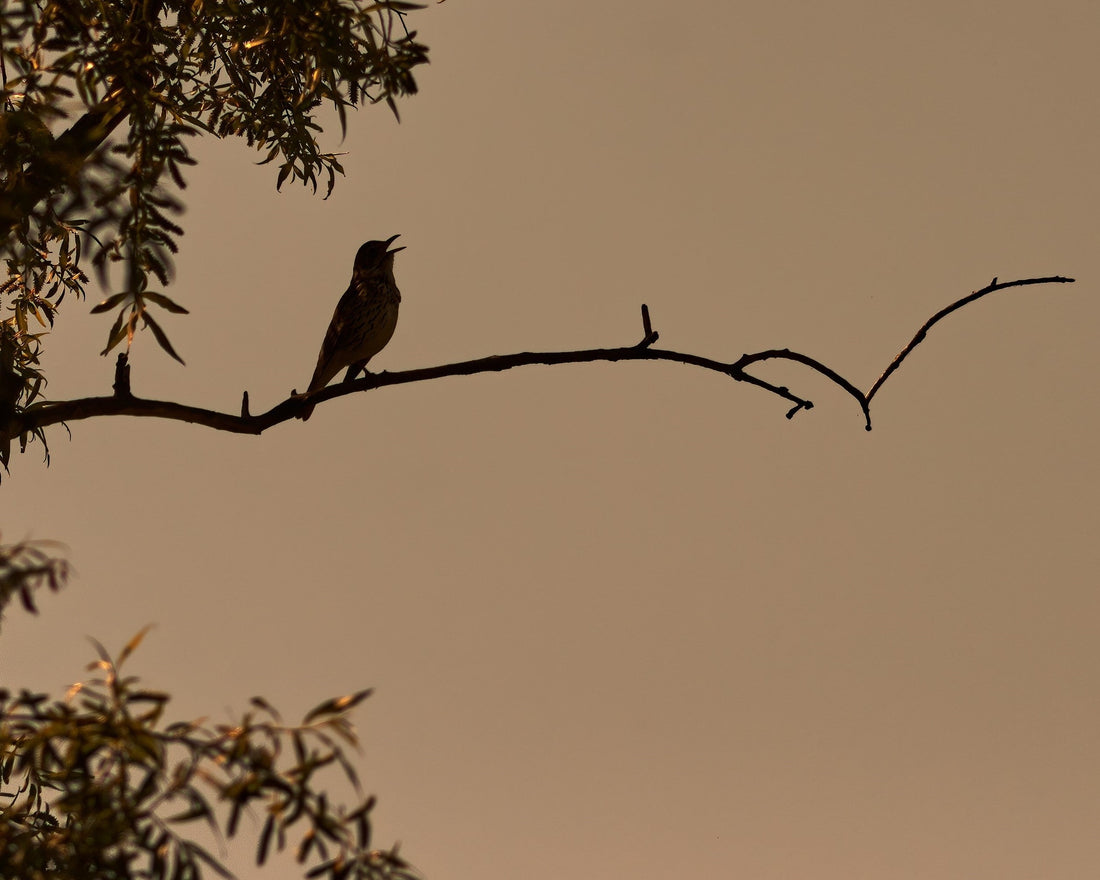Birding, whether by sight or sound, is a rewarding experience and understanding bird behavior can make it even more enjoyable.
The Basics of Bird Behavior
Bird behavior encompasses the activities and natural responses of birds to their environment. Observing these behaviors can provide insight into their survival strategies, mating rituals, and social interactions.
Understanding Bird Communication
Birds communicate through a variety of vocalizations, which can reveal their emotional states, intentions, and even warnings. Because many birds are heard but never seen, using sound as a primary cue for identification, also known as birding by ear, is a very useful skill. It is also a great way to start understanding what birds might be trying to communicate when they vocalize.
- Calls vs. Songs: Calls tend to be shorter and simpler, often used for communication or as warnings between individuals. Songs are more elaborate and primarily serve to attract mates during breeding season.
- Context Matters: The same bird might produce different sounds depending on the situation—whether it’s warning of a predator or signaling distress.
- Learning New Sounds: Young birds learn their calls and songs from their parents, making vocal mimicry a fun observation point during the nesting season. Some species are able to learn new songs throughout their lives, while others are only able to pick them up during short periods in their early lives.
Observing Social Interactions
Birds are inherently social creatures, often seen in flocks, especially during the non-breeding season. Watching these social interactions can reveal much about their hierarchies and relationships. Here’s what to pay attention to:
- Flocking Behavior: Birds often flock together for protection against predators and to locate food sources. It is not unusual to spot mixed-species flocks.
- Hierarchies: Dominance and sub-dominance can be observed in bird flocks. Watch for aggressive postures, displays, or vocalizations that indicate power dynamics.
- Parental Care: Witnessing how parent birds interact with their young can offer insight into their breeding strategies and nurturing behaviors.
Identifying Birds in Their Habitat
The environment plays a crucial role in dictating bird behavior. Different bird species can be found in various habitats, such as forests, wetlands, and urban areas. By understanding the characteristics of these habitats, you’ll enhance your chances of spotting specific birds.
Key Habitats to Observe
- Forests: Dense foliage offers cover for many species. Pay attention to canopy dwellers versus ground-foraging birds.
- Wetlands: These areas are teeming with life. Look for wading birds during low tide or high activity when insects are plentiful.
- Urban Environments: Surprisingly, many birds thrive in city settings. Get to know the adaptable species in your area and consider their behavior around human presence.
Seasonal Variations
Bird behavior changes with the seasons, driven by factors like migration, nesting, and foraging. Understanding these patterns can significantly enhance your birding experience:
- Migration: Many birds migrate seasonally. Your yard host birds making a stopover during their migration. These can be very exciting times to see and hear new birds. Consider investing in a Haikubox, which will listen for and alert you when new birds rest and look for food in your yard.
- Nesting Behavior: The spring months are prime for observing courtship displays and mating rituals. Look for busy nests and feeding behavior, and be sure to check your Haikubox identifications to see which birds are most active.
- Feeding Seasons: Different times of year will bring shifts in food availability, causing birds to adapt their foraging strategies and social structures.
Birdwatching = Bird Observing
Beyond just watching birds, productive observation requires patience, practice, and sometimes, a bit of strategy. Here are several tips to enhance your birding endeavors:
1. Invest in Quality Binoculars
Having a good pair of binoculars allows you to observe birds up close without disturbing them. Choose binoculars that suit your environment and match your vision capabilities for optimal birding experiences.
2. Maintain a Field Journal
Keeping a journal will help you track your observations, note behaviors, and recognize patterns over time. Recording what you see, what time it happens, and in which locations can enhance your skills. Tools like Merlin and eBird can be helpful, and Haikubox automatically acts as a hands-off observation and bird observation tool. See more below.
3. Join Birding Communities
Joining local birding groups can provide valuable insights and shared experiences. Engaging with seasoned birders can improve your observational skills while expanding your knowledge about local species.
4. Be Mindful of Your Presence
Minimizing noise and movement is essential when observing birds. Wearing muted colors and positioning yourself downwind can significantly increase your chances of observing natural behavior.
Using Technology to Enhance Observation
In today’s tech-savvy world, various tools can aid your birdwatching tasks. Consider these technologies and apps:
- Bird Identification Apps: Apps like Merlin, eBird and BirdNET can help you identify bird species based on location and sound, aiding significantly in visual bird identification and learning birding by ear. Haikubox is more than just the smartphone app and doesn't require that you be home to identify birds. As an automatic, 24/7 birdsong identifier, it can be a great addition to the free apps you can use when birding away from home.
- Online Databases: The Cornell Lab of Ornithology has several great websites with accompanying databases packed with useful bird information, including sizes, lifestyles, distribution and migration maps and nesting habits to better understand the birds you observe. The Audubon Bird Migration Explorer is another great, interactive tool.
Engaging in Responsible Birdwatching
Birdwatching is a privilege, and with it comes the responsibility to protect avian habitats and foster safe environments for birds. Here are some guidelines for ethical birding:
- Stay on Designated Trails: When exploring natural parks or reserves, keeping to trails prevents habitat degradation.
- Avoid Disturbing Nests: Be particularly cautious during nesting season to prevent disrupting breeding activities.
- Respect Local Regulations: Follow park guidelines and encourage fellow birders to adhere to the same principles. Be kind to other birdwatchers.
Birding by Ear
Learning to identify birds through their vocalizations enhances your overall birdwatching experience. Here’s how to get started:
Start with Common Calls
Begin by memorizing the calls of common birds in your area. This could include robins, sparrows, or cardinals. Familiarity with these sounds builds a strong base for appreciating more complex melodies from diverse species.
Practice Listening Skills
Spend time outdoors simply listening. Take a moment to sit quietly; engage your senses—tune into the sounds around you. Building this awareness helps you distinguish between various calls.
Create a Sound Map
Try to note where different sounds are coming from while you’re out in the field. Drawing a sound map enhances your spatial awareness and helps identify bird behaviors based on their calls’ locations.
Unlocking the Mystery of Bird Behavior
Understanding bird behavior encompasses a blend of observation, knowledge, and experience. Embrace the journey of learning about these remarkable creatures; the more you observe, the richer your birdwatching experiences will be! With an appreciation for elements from communication to nesting rituals, each outing can turn into an exciting exploration of nature’s wonders. Embrace your role in this avian adventure and take your birdwatching from casual to extraordinary!

